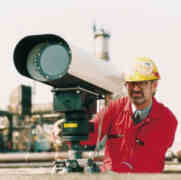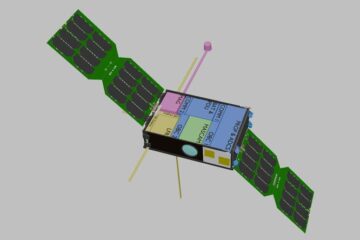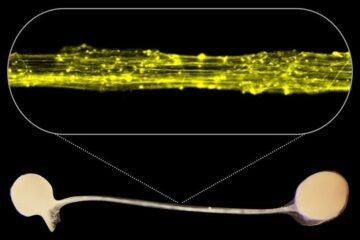UV Beam Identifies Invisible Air Pollutants

The Falcon system scans for up to 20 toxic substances
Air pollution used to be something you could see and smell. But as air quality standards have tightened, the air over most industrial sites, airports and cities has gradually cleared. Nevertheless, invisible toxic agents such as ethyl benzene, butadiene and styrene continue to pose risks to public health. With a view to detecting and quantifying these agents, Siemens Environmental Systems Limited in Poole, England has introduced UV Falcon. The system consists of a transmitter that projects a UV (ultraviolet) beam generated by a deuterium lamp across an open path of between 10 – 200 meters to a receiver. Based on the principle that gases have characteristic “spectral fingerprints,” or in other words absorption lines in the 200 – 300 nanometer UV range, the system uses a patented fourier transform spectrometer to scan the beam for up to 20 toxic and environmentally harmful gases in low parts per billion levels. Although the majority of applications are for fixed installations, the Environment Agency of England and Wales recently purchased a Falcon system for rapid mobile deployment.
Media Contact
All latest news from the category: Ecology, The Environment and Conservation
This complex theme deals primarily with interactions between organisms and the environmental factors that impact them, but to a greater extent between individual inanimate environmental factors.
innovations-report offers informative reports and articles on topics such as climate protection, landscape conservation, ecological systems, wildlife and nature parks and ecosystem efficiency and balance.
Newest articles

Caution, hot surface!
An international research team from the University of Jena and the Helmholtz Institute Jena are demystifying the mechanisms by which high-intensity laser pulses produce plasma on the surface of solids….

Exploring the Asteroid Apophis With Small Satellites
In five years’ time, a large asteroid will fly very close to Earth – a unique opportunity to study it. Concepts for a national German small satellite mission are being…

First model of the brain’s information highways developed
Our human brain is not only bigger and contains more neurons than the brains of other species, but it is also connected in a special pattern: Thick bundles of neurons…





















